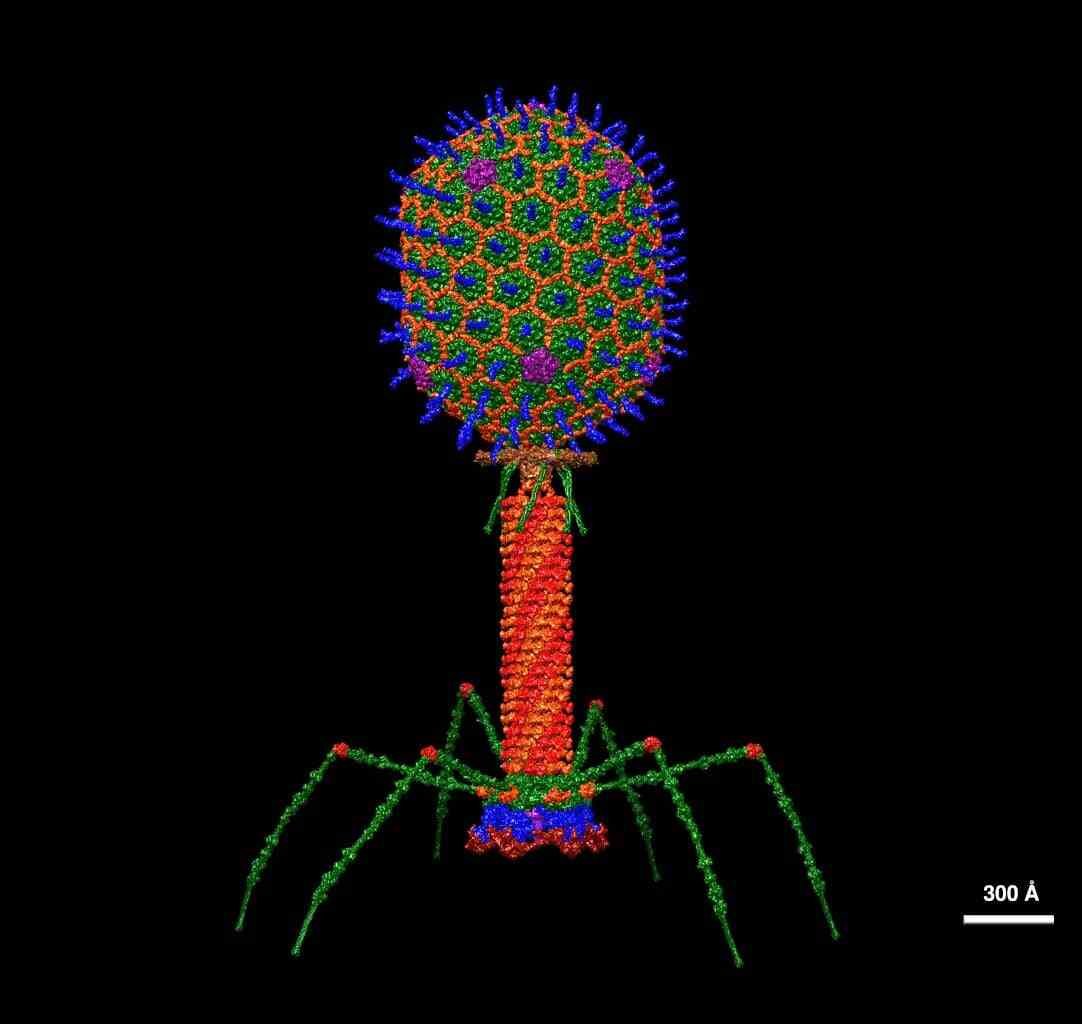Good and Bad Viruses
Not all viruses can harm us. There are good and bad viruses.
Among the 3600 species described by the scientific community, only 129 are pathogenic to humans. Most of the others protect us: they destroy bacteria that are harmful to humans. Scientists call them bacteriophages (a type of virus that can kill bacteria) or therapeutic viruses, this family of viruses has been known for a hundred years. The contamination mechanism, for example by this microorganism, is very effective: the sheath is equipped with receptors that recognize specific proteins on the surface of the bacteria. Once docked, they produce enzymes that penetrate the cell wall. They then injected their DNA which reprogrammed the bacteria to produce new virions. The host explodes under pressure and the aggressor hunts for a new target, saving the body’s healthy cells. The contamination cycle took barely twenty minutes and produced between 100 and 300 new bacteriophages. When they have nothing left to eat, the body naturally eliminates it. In two or three days, the case is closed.
An international competition taking part in half a dozen laboratories around the world, including the Pasteur Institute, has cataloged these useful bacteriophages, and cleverly designed new bacteriophages from viruses.
Oncolytic virus
About twenty therapeutic viruses are currently under development worldwide and the first targeted vaccine against melanoma, T-Vec, has been marketed by American biotech company Amgen. This is a herpes virus in which two genes have been removed (one stops the cell’s defenses, the other allows it to evade the immune system) and a new one is added to cause the burst of cancer cells.
Read also: Biology Studies and Branches (Fields of Biology)
This “oncolytic virus”, which was first approved by the Food and Drug Administration, opens up enormous prospects, especially for cancers with an unfavorable prognosis such as colorectal cancer, lung cancer and myeloma (bone marrow cancer). According to the analysis of experts from the qualitative research firm Persistence Market Research, the oncolytic virus market is expected to grow by 12% per year until 2029.
Examples of bacteriophages (viruses that can kill bacteria)
As explained above, there are good and bad viruses. Bacteriophage is a type of virus that infects bacteria. But we don’t have to worry about bacteriophages because they are harmless to all of us and also to animals and plants. Bacteriophages are only harmful to bacteria because they need bacteria to multiply. The reproduction of bacteriophages is very different from that of animals or plants. The following is an example of a bacteriophage:
- T4 virus: which attacks the bacterium Eschericia coli (E. coli)
- Bacteriophage Mu: bacteria serve as natural hosts, with transmission achieved via passive diffusion.
- P1: temperate bacteriophage that infects Escherichia coli and some other bacteria.
- Bacteriophage P2: with the scientific name Escherichia virus P2, is a temperate phage that infects E. coli.
- Enterobacteria phage (lambda phage, coliphage, officially Escherichia virus Lambda): is a bacterial virus, or bacteriophage, that infects the bacterial species Escherichia coli (E. coli).
- Escherichia virus T5: sometimes called Bacteriophage T5 is a tail virus in the family Demerecviridae. This bacteriophage specifically infects E. coli bacterial cells and follows a lytic life cycle (virus replication accompanied by the death of the host cell after the formation of new viral daughters).
- Escherichia virus HK97: often shortened to HK97, is a species of virus that infects Escherichia coli and related bacteria. Named after Hong Kong (HK), where it was first located. HK97 has a double-stranded DNA genome.
- Ravinvirus: (synonym N15-like virus, N15likevirus) is a genus of viruses in the order Caudovirales, in the family Siphoviridae. Bacteria serve as natural hosts, with transmission achieved via passive diffusion. There is only one species in this genus: Escherichia virus N15.
Infectious Diseases and Contagious (viruses, bacteria, parasites, fungi, protozoa)
Sources: PinterPandai, DW, Scientific American, Amgen
Photo credit: Dr. Victor Padilla-Sanchez, PhD (CC BY-SA 4.0) via Wikimedia Commons
Photo description: atomic structural model of bacteriophage T4 in UCSF Chimera software using pdbs of the individual proteins.



